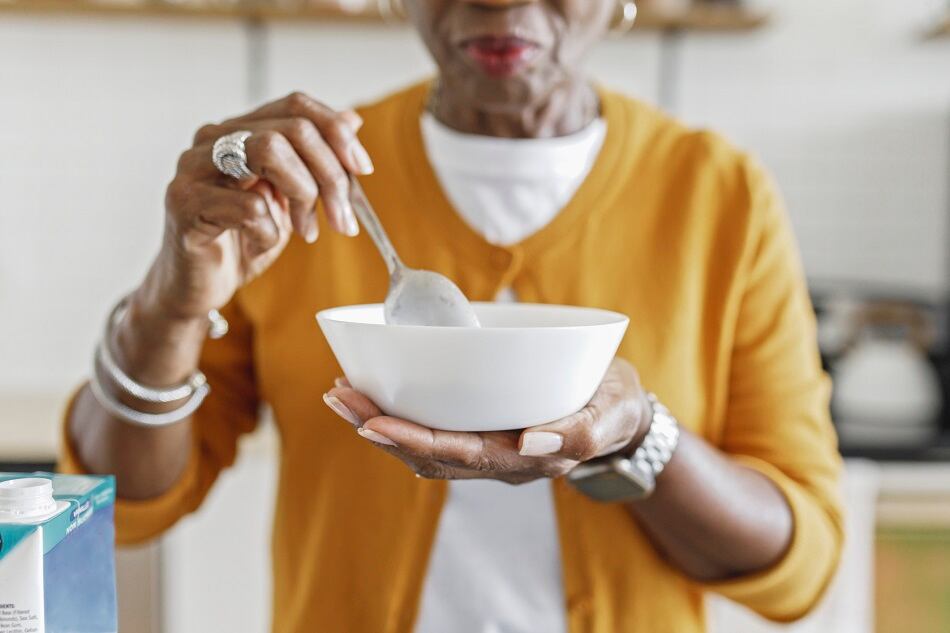Researchers found that cereal fiber, not fruit or vegetable fiber, was consistently associated with lower inflammation and lower CVD incidence in older adults.
According to researchers of the study, there was little previous information investigating the link between total fiber intake and inflammation.
"To our knowledge, formal mediation analysis testing whether and to what extent inflammation mediates the observed inverse association between high dietary fiber intake and CVD risk is lacking. Moreover, one particular source of dietary fiber (e.g., vegetable fiber) but not another (e.g., fruit fiber) could mediate this association; understanding this could inform potential interventions for CVD risk reduction," wrote researchers in the study.
The USDA 2020-2025 Dietary Guidelines recommends that females age 51+ consume 22g of fiber per day and 28g of fiber for males 51+. But according to the USDA, more than 90% of women and 97% of men do not meet recommended intakes for dietary fiber.
Study methods and findings
The study looked at a large cohort of 4,125 elderly individuals enrolled in the Cardiovascular Health Study from 1989 to 1990 and whose dietary intake, inflammation, and incidence of CVD were well documented.
Participants without prevalent CVD at enrollment received a food frequency questionnaire and then received visits for development of CVD (stroke, myocardial infarction, and atherosclerotic cardiovascular death) through June 2015. Blood samples were assessed for markers of inflammation.
The research confirmed previously observed associations between dietary fiber and CVD and extended those investigations to include the source of the fiber, the relationship of fiber with multiple inflammatory markers, and to test whether inflammation mediated the relationship between dietary fiber and CVD.
"Higher intakes of dietary fiber is associated with lower CVD risk. A common hypothesis has been that higher fiber intakes reduce inflammation, subsequently leading to lower CVD risk," said Rupak Shivakoti, PhD, assistant professor of epidemiology at Columbia Mailman School and lead author of the study.
"With findings from this study, we are now learning that one particular type of dietary fiber -- cereal fiber -- but not fruit or vegetable fiber was associated with lower inflammation."
Further investigation needed
However, the findings are not totally conclusive as to why cereal fiber, and not fruit or vegetable fiber, is associated with lower CVD incidence and inflammation warranting further investigation, noted Shivakoti.
"With findings from this study we now are learning that cereal fiber has the potential to reduce inflammation and will need to be tested in future interventional studies," said Shivakoti.
"Additionally, we learned that inflammation had only a modest role in mediating the observed inverse association between cereal fiber and CVD. This suggests that factors other than inflammation may play a larger role in the cereal fiber-associated reduction in CVD and will need to be tested in future interventions of specific populations."
Additionally, the research does not discount the positive role dietary fiber from fruits and vegetables can play in improving certain health biomarkers.
Researchers pointed out that while cereal fiber was found to be the strongest link to lower incidence of CVD and inflammation, the data does suggest that fiber in general may have an anti-inflammatory effects by improving gut function and modifying diet and satiety (leading to reduced fat and total calorie intake).
Source: JAMA Network
Published online, DOI: 10.1001/jamanetworkopen.2022.5012
"Intake and Sources of Dietary Fiber, Inflammation, and Cardiovascular Disease in Older US Adults"
Authors: Rupak Shivakoti, et al.

